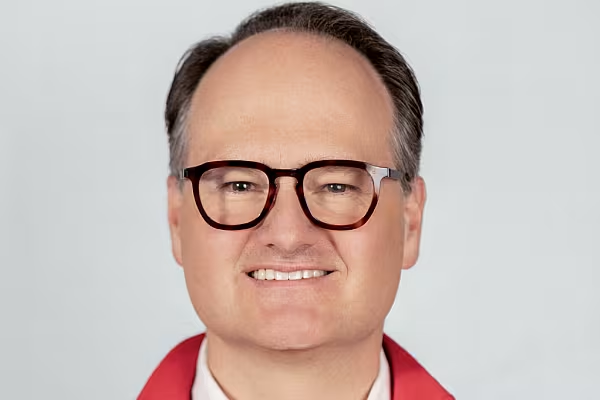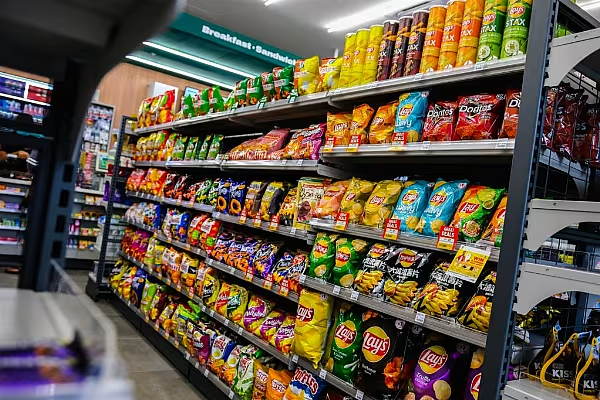Willem Brandt is the president of Europe and Pacific developed markets at The Kraft Heinz Company, where he oversees 20 markets across Australia, New Zealand, Japan, South Korea, and Continental and Northern Europe.
Reporting directly to the global CEO of Kraft Heinz, Brandt is responsible for the food company’s $3.7 billion (€3.34 billion) portfolio of world-leading brands, including Heinz, in these regions.
ESM caught up with the Dutchman to discuss the company’s ten-year growth strategy to deliver consistent top-line growth that will help fuel the future of food. This includes innovating at the speed of culture, responding to global food trends, cultivating a company culture that nurtures the food leaders of tomorrow, and working with cutting-edge partners to support a more sustainable food system.
ESM: Can you tell us about Kraft Heinz’s 'Taste Elevation' strategy?
Willem Brandt: Taste Elevation is the term we give to foods that make good food taste even better. I like to think of these products as the unsung heroes of the kitchen cupboard that take your dish to the next level, whether it’s a bacon roll with HP sauce, a burger with Heinz Tomato Ketchup, or a simple sandwich transformed with Heinz [Seriously] Good Mayonnaise.
It’s also where we have the biggest opportunity to grow and the biggest ‘right to win’. With more than 40% of our global portfolio already in Taste Elevation, and with Heinz at the helm, we are a clear leader in this space. We are already the number-one player in sauces worldwide.
In Europe, one of the ways we are growing the category beyond ketchup is by expanding into new categories where it makes sense, like our Heinz Pasta Sauces or Heinz Culinary Tomato range.
Another approach is looking at new ‘host foods’, where our sauces are less present, like fried chicken, which is outpacing fish and chips as Britain’s favourite takeaway dish. It’s also about injecting variety and excitement through our core ranges and developing new flavours, like our pickle-flavoured Heinz ketchup, available in Germany and the Netherlands.
As we do all this, we are very clear about our commitment to quality, because there’s no Taste Elevation without carefully sourced, great-tasting ingredients.
What does the ‘future of food’ look like, to you?
I don’t have a crystal ball, but I can say with some certainty that technology, a growing population, and shifting consumer values will continue to have a significant impact on how we produce and consume food.
Firstly, evolving consumer expectations around sustainability will place new demands on food companies like ours, and rightly so, but this is just as much an opportunity as it is a challenge, and I’m optimistic and excited by what our teams are doing to lean into these issues.
Take, for example, our Heinz recyclable bottle, made from 100% sustainably sourced wood pulp. We were the first sauce brand to test the potential of Pulpex’s sustainable paper bottle and are in the process of testing larger-scale production.
There is still plenty of work to do on this project, but it is a tangible example of what the future of food, and food packaging, may look like in the not-so-near future.
Whether the motive is health or the environment, we see consumer interest in healthier, more plant-based food continuing, so we’ll also keep innovating in this space, whether it’s through our iconic Heinz Beanz products, plant-based versions of our classic soups and sauces, or through new brands, like our NotCo line of products – currently in North America.
It’s also true that technology will continue to evolve rapidly, changing how and where we shop, be that online, in store, or through social commerce. Within e-commerce, personalisation will become bigger than ever, and same-day delivery will become the expectation, not the exception.
At Kraft Heinz, we are learning a lot from pilot markets like Italy, China and the UK, who are taking the lead on this type of commerce, experimenting with live shopping on TikTok, offering personalised shopping bundles for new parents through our baby food brand, Plasmon, or offering shoppers early access to new-product innovation through our D2C platform, HeinzToHome.co.uk – all of which double-up as a valuable insights tool that help us, and our retail partners, deliver more of what our consumers want, where they want it.
What current global food trends have caught your eye?
Flavour exploration and discovery through food is a powerful insight we have been following closely, to inspire new innovation across Kraft Heinz. We know our consumers are turning to new foods and flavours to ‘travel’ to countries and cultures they have always been curious about, with Mexican food emerging as a real front-runner.
In the UK, we recently launched Las Chicas, a line of five meal kits containing all the essentials to make authentic-tasting Mexican food in as little as 20 minutes.
It is still early days, but I believe we have a strong proposition for shoppers wanting a ‘real’ taste of Mexico, and we are looking forward to supporting the launch with a marketing push later in the year.
Kraft Heinz plans to work alongside its partners to support a more sustainable food system. Tell us more about this.
On the packaging front, we have worked with Pulpex – who I’ve mentioned already – to help design the ketchup bottle of tomorrow, using sustainably sourced wood pulp. We hope to bring this bottle to market and to be the first sauce brand to provide consumers [with] this choice.
Most recently, we unveiled our fully recyclable cap for our squeezy ketchup bottles in Europe, created in collaboration with Berry Global. These recyclable caps were a real labour of love and took our teams eight years of dedicated effort, 45 prototypes, and more than 185,000 hours of development.
In 2022, we partnered with a major UK supermarket [Tesco] to launch a pioneering trial aimed at tackling the UK’s soft-plastic recycling challenge. As part of the collaboration, we took the soft plastic returned to Tesco stores by customers and worked with specialists to create recyclable Heinz Beanz Snap Pots, made with 39% recycled soft plastics. The project was a winner of the 2022 UK Packaging Awards and a great example of collaboration in action.
We are also taking this beyond packaging, with our focus on sustainable agriculture. It all starts at our specialist agriculture and seed research centre, Heinz Seed, in California. Here, our team of researchers and scientists help to future-proof our unique Heinz tomato ketchup seeds and test new, sustainable practices, to ensure we can keep growing tasty tomatoes for years to come.
Then it’s over to our growers, who I also like to think of as cutting-edge partners, to grow and harvest the tomatoes, using sustainable agricultural practices that have been honed over many years, in collaboration with our agronomy experts.
I truly believe that collaboration is the key to creating a more sustainable food system.
What do you consider your best business decision so far?
Surrounding myself with a leadership team who live and breathe our Kraft Heinz values and culture, share our ambition to lead the future of food, and whose energy and passion is contagious.
I feel privileged to work with such an experienced, dynamic group of people, and I am confident that we have the right team in place to help grow our people and, ultimately, our business.
What do you see as the main challenges in Kraft Heinz’s ten-year growth strategy?
I could share a long list of challenges the industry will inevitably face over the next ten years, from how we navigate AI with integrity to how we tackle the interconnected environmental issues that remain unsolved. Finding solutions to these challenges will require us to have the right talent, both today and in the future.
So, ensuring we keep attracting the right talent and being a global employer of choice is one challenge we are tackling together, across the company.
Staying as close as we possibly can to our consumer, truly understanding their needs, desires and demands, will always remain a challenge for any food company with a long-term growth strategy.
We need to be several steps ahead of what our consumers are asking for and delivering high-quality, trusted solutions within our range of expertise.
We have a strong road map to follow for our future, but will always be ready to pivot to meet changing consumer needs, as and where it makes the most sense.
What has surprised you the most in your role so far?
In my first year as zone president, Europe and Pacific developed markets, I’ve been focused primarily on learning – and I mean really getting into the detail – about the different consumers, customers and cultures that make up our ‘EPDM’ zone, which comprises over 20 countries, over 11 languages, and around 6,500 employees.
Every market has its differences, which is what makes the job so interesting, but it’s what we have in common that has surprised me most. These parallels – be that our supply chain, shared consumer profiles, or customer base – are also what excites me the most, and as I approach the end of my first year in the role, I’m feeling inspired by what more we can do to create value for our customers and consumers.
Of course, I have met some brilliant people along the way, though this hasn’t been a surprise!













